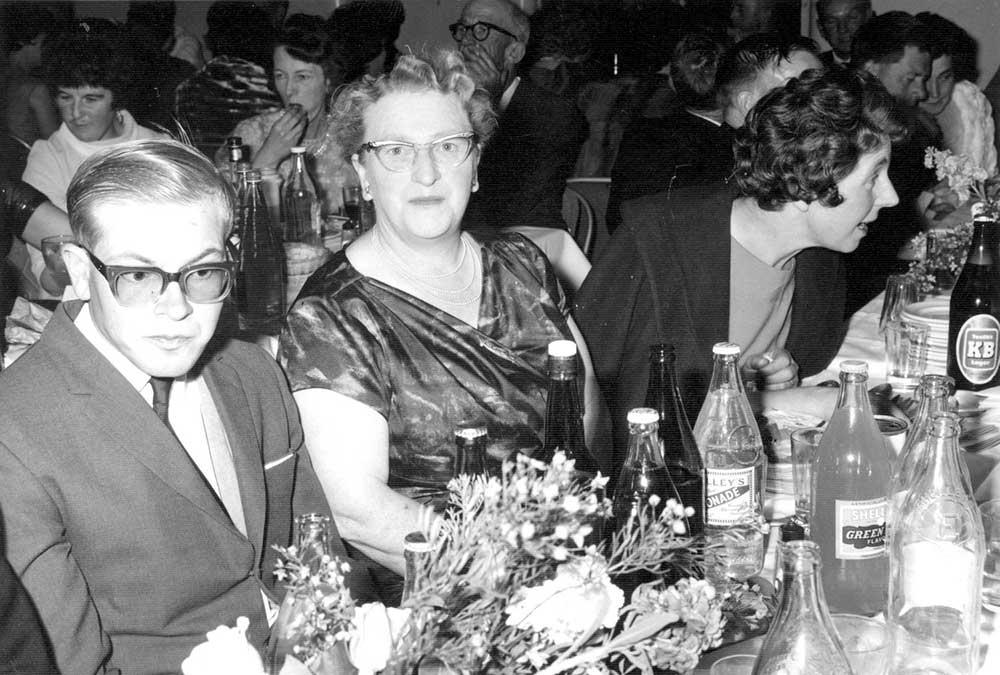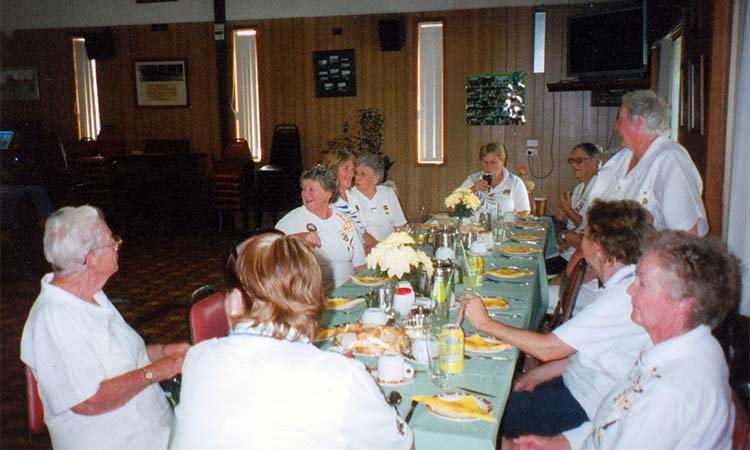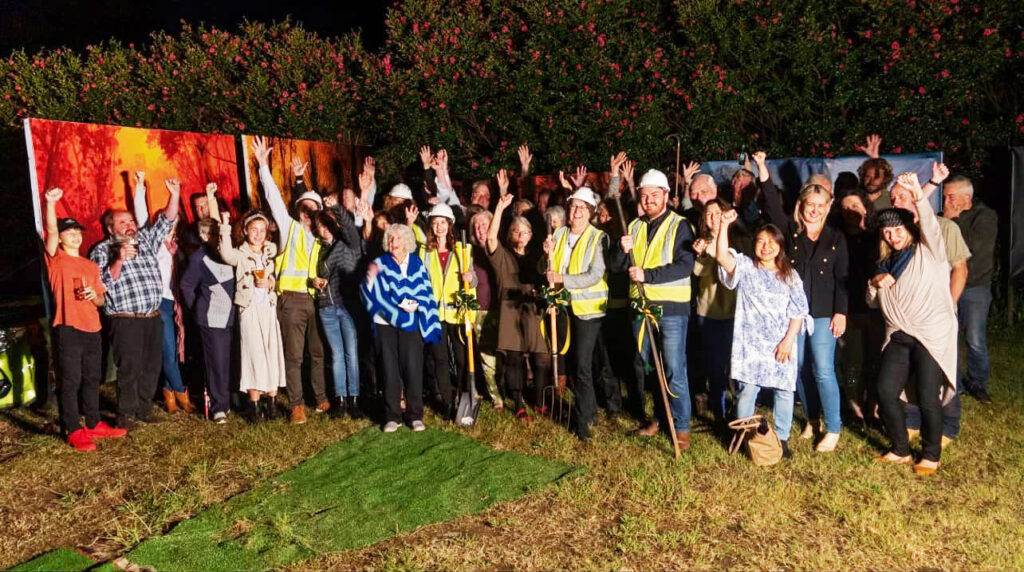Our history
Finding our place
The Kurrajong Heights Bowling Club was formed in 1929 by Henry Edward “Ted” Peck with games played on the bowling green at the Kurrajong Heights Hotel.
In 1964, growing disagreement with the hotel management prompted George Chapman, postmaster at Kurrajong Heights, to call a public meeting to form the Kurrajong Heights Bowling and Recreation Club (KHBRC). Three sites for the bowling green were nominated: in Kurrajong Village on the site of the railway station (which had closed in 1952); on land near Cut Rock; and at Powell Park. Consulting architects recommended Cut Rock due to an abundant water supply – necessary for maintaining the green – and its relatively level ground.
Four and a half acres were purchased from Mr Spencer Scott at Cut Rock, and over the next eighteen months many people took out debentures to help to finance the project and negotiated with the local council and the Department of Main Roads. A band of enthusiastic volunteers began preparing the ground for the bowling green which, due to their inexperience, would suffer ongoing drainage problems.
On 6th February 1966 a meeting was held at “Craig O Lea”, Bilpin, the home of Mr and Mrs Lou Mincham, to incorporate the club and make plans for the first stage of a clubhouse.
After more monthly meetings and sustained fundraising, the clubhouse was completed by May 1967 and regular meetings were transferred to the site. In June a greenkeeper was employed. Coaching was now also possible on the green. Harry Bentley, whose wife was patron of the club, coached as a volunteer for many years.
 An auxiliary women’s club
An auxiliary women’s club
In April 1966 women members had been invited to form an auxiliary club; in May the first meeting of the Kurrajong Heights Women’s Bowling Club was held at the home of Mr and Mrs George Davidson in Kurrajong Heights. The club’s first president was Alice “Doll” Binnie.
Membership of the Women’s Club $8.40 and every Tuesday was Ladies Bowling Day. Fundraising began with a luncheon at “Craig O Lea” attended by 60 people, featuring a fashion parade of bowling attire by Bentley’s of Burwood. Harry Bentley offered the ladies bowling instruction and points on etiquette. As the ground at “Craig O Lea” wasn’t suitable, bowling practice was held in the hallway of the house – sacrificing a large floor vase.
When the new clubhouse was completed, the Women’s Club agreed to supply afternoon tea for the men’s bowling, setting up the kitchen with a hot water urn and crockery each weekend for 21 years.
In 1981 the NSW Bowling Association raised the permitted dress length from 14 inches above the ground to 17 inches. Daringly, “slack suits” were allowed, but not for pennants or state tournaments.
 Competitions and a clubhouse upgrade
Competitions and a clubhouse upgrade
Many bowling clubs were hosted at Kurrajong Heights for competitions, despite interruptions due to continuing drainage problems with the green, the maintenance of which was an ongoing drain on club finances. Fundraising efforts included the Apples Triples Day, which was first held in March 1972 and became an annual event. Apples were for sale, and given as trophies; there were apple pies and cream, apple cakes and slices for sweets after a sandwich lunch.
In 1977 the long-awaited building extensions were completed and the new clubhouse opened with a larger kitchen, a new refrigerator, crockery and banquet tables.
During the 1980s, amidst an aging membership, the original green was replaced with a synthetic surface, which eventually proved more suitable and reliable than the grass.
Through the 1990s, membership continued to decline as people died or left the district. More women were working and lacked time to play bowls. In 2000 the Men’s Club played competitively for the last time. In 2007 the Women’s Club, with only 7 members, also held their last competition.
A shift in focus to the community
From the mid-2000s bowling at the KHBRC continued on a social basis and the club’s primary focus shifted to providing an accessible, low-cost social venue for the communities of Kurrajong Heights, Bilpin and other nearby localities.
Helping to sustain the club financially are regular events, such as the weekly Community Dinners most Thursday evenings, with volunteer chefs in the kitchen providing hearty meals and a lightweight trivia comp to enjoy.
During the Covid-19 pandemic lockdowns the KHBRC was closed. Upon reopening in 2020 the government’s patron density limits were severely tested by two new monthly events: Miranda’s Monthlies Drag Trivia and Name That Tune with Sam Ramaci. Both events combine dinner and show to hilarious and/or chaotic effect.
As one of the last remaining community-owned and run venues in New South Wales, the KHBRC also hosts one-off events for local businesses, not-for-profits, community organisations and individuals: morning teas, social bowls, birthday and hens parties, Christmas parties and other functions.
The Bilpin Shed
The Bilpin Shed began life sharpening tools at Bilpin District Hall. In 2019 the group began meeting at the KHBRC and from 2020 to late 2022 it had a permanent home there.
Recent improvements
In late 2021 the club substantially completed construction of its all-new commercial-grade kitchen to cater for community dinners and the monthly dinner-and-show events.
Following the 2019/2020 bushfires and 2021 floods, rebuilding and resilience grants have provided the KHBRC with much-needed means to improve its amenities. In 2020 a children’s playground was opened just adjacent to the clubrooms and in 2021 a large solar panel was installed in front of that. After a Building Back Better grant for the replacement of the clubrooms’ asbestos roof with Colorbond, this significant work was completed in June 2022.
After a lot of dedicated time and heavy work that began before the pandemic, in early 2022 The Bilpin Shed completed a substantial Community Garden in the KHBRC grounds just north of the car park.

